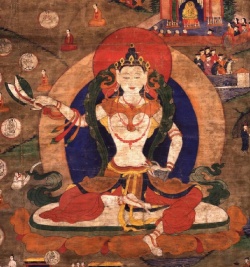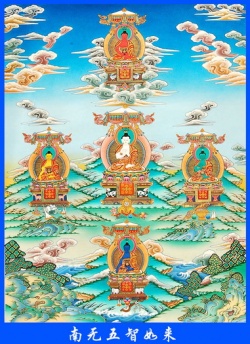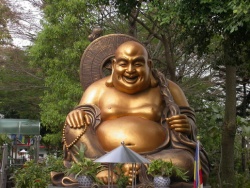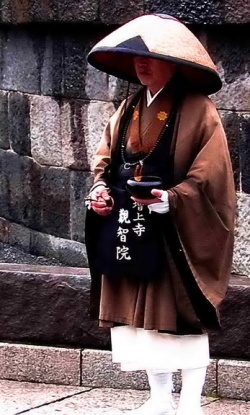The esoteric doctrine
In consequence of a book with this title having been written by A. P. Sinnett, much controversy and inquiry has arisen, on the one hand, as to what Esoteric Buddhism is and on the other, as to whether there be any such thing.
The term as it has been used since the Theosophical Society began to be the means of bringing the sublime philosophies of the East before a large body of students, is held to refer to some hitherto hidden knowledge or explanation of the laws governing the evolution of the universe.
While there is in fact an Esoteric Buddhism, some other name for the book referred to might have been perhaps better, because the student speedily finds that there is no essential difference between Esoteric Buddhism and Esoteric Brahmanism, although as a matter of history, the Brahmans drove the Buddhists out of India , several hundred years after the death of Buddha.
If the title selected had been "Esoteric Brahmanism," it would have done just as well.
THE ESOTERIC DOCTRINE
In briefly considering the matter then, it must be understood that we are not confined solely to Buddhism but to what would be more properly called the "Esoteric doctrine," which underlies Brahmanism and Buddhism alike. And it should also be well understood that much that is now called "Esoteric" by us, has been long known in India and cannot therefore be properly said to be Esoteric.
Very much as the secret meaning of the Hebrew Bible has been plainly before the eyes of all in what is known among the rabbins as the Kabalah, so this Esoteric doctrine has been buried in the Indian scriptures for ages under many allegories, the key to which has been held by the Brahmans, the priests of India, and they, like the priests of other religions, have kept that key to themselves or thrown it away.
A very good illustration of this may be found in the story of Draupadi, who is said to have been the wife of all the five Pandu brothers at the same time, as related in the great epic poem of the Aryans, the Mahabharata. This is taken as proof by many prominent orientalists of the existence of polyandry in India at that period.
The key to the story is found in the Indian psychological system, which locates in the human body five vital centers. The union of these centers is in this system said to take place when a man has become completely master of himself and is called the marriage of Draupadi with the five Pandus, as those vital centers are the Pandus.
In the Bhagavad-Gita, translated by Edwin Arnold under the title of The Song Celestial, the entire doctrine called Esoteric Buddhism may be found; and this book is held in the highest esteem by both Brahmans and Buddhists. The reason why this doctrine has not been long ago apparent to us is because of the extremely narrow way in which all Indian psychology and philosophy has hitherto been regarded, with the aid of such eminent authority as Max Muller.
A KEY TO ESOTERICISM EXISTS
It has been said above that the Bhagavad-Gita contains all of this Esoteric doctrine, but while such is the case it cannot be found in its entirety without the key. That key was deliberately suppressed at the time of the driving out of the Buddhists from India when the Pauranikas, or those who followed the ancient Puranas, were desirous of concealing the similarity between Buddhism and Brahmanism.
The missing key is said to be contained in a work three times as bulky as the Mahabharata, and to have been carried away by the Buddhist Initiates; and the tradition now claims that in Ceylon at the Kandy Temple is a copy. It is from this key that whatever is new in Mr. Sinnett's book has been taken, although it is improbable that he was aware of that fact.
WHENCE THE UNIVERSE ?
Most orthodox Aryans believe that the universe came out of something, while a few say that it came out of nothing. The Esoteric doctrine reconciles these by saying that that something is no thing. The particular sect which holds to the coming out of nothing is known as the Madhyamika, and is not numerous.
The exoteric Indian philosophies, call the Universe, Brahma, consisting of (Sat) absolute existence, (Chit) absolute intelligence and (Ananda) absolute bliss, with two other divisions called (Nama) name and (Rupa) form.
The Esoteric doctrine does not content itself with a mere metaphysical juggling with these terms, but goes to the length of claiming to explain the method of universal evolution and the hidden things in nature. This of course includes declarations in regard to the state of the soul of man preceding birth and his condition and course after death.
THE COURSE OF EVOLUTION
As to the course of evolution, it is said, as far as our solar system is concerned, that there are seven planets corresponding to a seven fold division of man's nature which are necessary to carry out the process. This earth is one of these and the other planets known to astronomy are not necessarily a part of that portion of the process so far given out.
In these this earth is the turning point where the soul of man begins its conscious career.
HOW KARMA WORKS
Here, after having passed through all forms of animate and inanimate life he begins to come consciously under the operation of the law of Karma, which is a law demanding complete compensation for every act, word and thought, and which results in removing the idea of the possibility of a vicarious atonement; and here he is born over and over again, reaping in each life the exact results due to him from the life preceding, and being therefore at any one instant of time the exact product or resultant of all his previous lives and experiences. So that these two doctrines of Karma and Rebirth, are interwoven one with the other.
After death the real man -- the ego -- goes to what the Christians call Heaven, and which in the East is called Devachan. The words of the Bhagavad-Gita will best enunciate this. In Chapter VI, Arjuna asks,
"Whither O Krishna , doth the man go after death, who although he be endowed with faith, hath not obtained perfection in his devotion?"
To which Krishna replied:
"His destruction is found neither here nor in the world above. A man whose devotions have been broken off by death, having enjoyed for an immensity of years the rewards of his virtues in the regions above, is at length born again. . . . Being thus born again he resumes in his new body the same habit he had before acquired and the same advancement of the understanding and here he begins again his labor (where he left it off)."
HEAVEN IS DEVACHAN BETWEEN REBIRTHS
This law applies to all, righteous or not, and the period of rest which is had in Devachan is the exact length of time the spiritual energy stored up in earth life will last. The length of time one stays in Devachan has been put by one or two English writers at fifteen hundred years, but this is erroneous, for the stay there depends in each particular instance upon the application of the immutable law to the facts of that case.
The Devachanic period is the great resting spell for all, and is one of the means provided by Nature for preventing a total degradation. During that state the Ego acquires some goodness for the next earth life, and when the Ego of a man who had before been extremely wicked is reborn, the new personality has to feel the consequences of all the evil done in that preceding life but comes to the task with the aid of the good influences of the rest in Devachan.
“RACES” VIEWED THEOSOPHICALLY
The doctrine does not leave out of view the different races of men, but in this instance the word "races" must be extended in its meaning so that it includes not merely a few varieties, such as ethnologists now admit, but gathers several of those varieties into one class.
Those races were developed as man himself developed different senses and different uses for them, and as the necessity for each race ceased, that race gradually almost disappeared, leaving now on earth only a few examples of each. In this way each ego had to pass successively through all the great races with their offshoots and being in every case subject to the law that it could not pass on to any new race until the one to which it belonged had finished its course and become converted into another.
This law is capable of modification in the case of adepts -- sometimes called Mahatmas -- who by the use of another law are able to rise above the limitations to which the ordinary man is subject.
The different races come and go, according to this doctrine, for enormous periods of time and all forms of life and nature pass and repass, until the hour arrives when the universal dissolution takes place. This dissolution is called the end of the Manvantara, and the name for it is Pralaya.
PRALAYA AND REBIRTH OF THE UNIVERSE
The succeeding chaotic period is known as the night of Brahma and is said to be as long as the Day, each lasting one thousand ages. When the night ends then all manifested nature begins again to appear as before, the evolutionary process commencing with nebulous matter or fire mist which cools gradually into various planets and stars where come forth forms of life.
Each world is held to be subject in its own small way to the law governing the outbreathing and inbreathing of the whole, just as man has his own pralaya each night in sleep and his great, or Maha pralaya, at death. So it follows that while in one solar system a minor pralaya had covered all with night, other systems might be perfecting their evolution, until the Maha pralaya when the whole manifested universe of Brahma comes to an end. From this follows the doctrine held by some Indian pandits, that Brahma containing potentially all manifested nature -- or manifestable nature -- converts itself into the Universe, and in no case creates anything but leaves all to be regularly evolved.
Much detail, very necessary for a proper understanding of the subject, has been omitted, but even from this inadequate view of only a portion of the Esoteric Doctrine, it will be seen that it is one which has a perfect scheme of evolution where both spirit and matter are given their proper places.





